There’s no question that iron is an important mineral for the human body. You need it for energy and multiple other bodily functions, which means a deficiency can be devastating.
For many years, meat and other animal-based foods have been touted as the premium sources of iron. Those who follow a plant-based diet, including vegans and vegetarians, have often been thought to be at high risk of iron deficiency.
The truth of the matter is that there are plenty of iron rich plant foods out there. Plant-based eaters can easily get enough of this critical mineral in their diet, especially by following some key tips for better iron absorption.
With that in mind, here’s more on the importance of iron, the best plant food sources, and what you need to know about absorbing it better.
What is Iron? + What it Does for Your Body
An Essential Building Block
Iron is an essential mineral, which means your body has to have it to function. It gets used as a highly important building block for hemoglobin and certain hormones, making it key for a wide range of vital processes within your body.
To get an idea of how important iron is, you only need to look at hemoglobin and the role it plays.
Hemoglobin is a protein in red blood cells that carries oxygen from your lungs to the rest of your body. Without it, your tissues and organs can’t get enough oxygen to function properly. Iron is a major component of hemoglobin, which means a deficiency can seriously impair the oxygen-carrying ability of red blood cells.
A lack of oxygen means poor brain function, loss of energy, and numerous other “malfunctions”.
Iron is also a key component of myoglobin, a protein that helps to keep oxygen in muscles, and is needed for healthy brain development and growth in children. It’s crucial for a healthy pregnancy as well.
Recommended Iron Intake
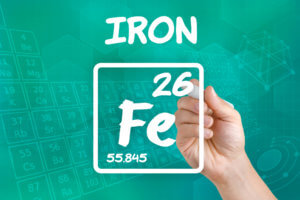
If you want to explore iron-rich plant foods, it’s important to know how much iron you should be getting daily. The answer isn’t quite as straightforward as it is with other nutrients, but here are some basic guidelines for getting your recommended daily intake (RDI):
- Females 19-50 years old: 18 mg per day
- Females over 50 years old: 8 mg per day
- Pregnant individuals: 27 mg per day
- Males 19 years and older: 8 mg per day
The U.S. Food and Nutrition Board (FNB) recommends that those who don’t eat meat get 1.8 times as much iron in their diet as the amounts listed above. This is because plant-based iron is generally not absorbed as well as animal-based iron— something we’ll go into detail about later on.
Iron Deficiency & Overload
Given the importance of iron, it’s clear that a deficiency can be extremely harmful to your health. The most common issue caused by low iron levels is iron-deficiency anemia, which affects an estimated 4-5 million Americans every year.
A full-on deficiency or lower than normal iron levels can lead to symptoms like:
- Fatigue
- Weakness
- Dizziness
- Headaches
- Pale or yellowish skin
- Brittle nails
- Cold hands and feet
- Swollen tongue
- Irregular heartbeat
The good news is that an iron deficiency can often be easily detected with a blood test. Iron is stored in your body as ferritin, so checking for low levels of this protein is a good way to reveal an insufficiency.
Of course, on the flip side, too much iron can also be harmful for your health. Iron toxicity is most likely to happen in those taking iron supplements and with a condition called hemochromatosis (excessive absorption of iron).
There’s also some research that suggests getting too much heme iron (the kind found in animal products) may have negative health consequences. Some studies have linked it to a greater risk of heart disease and stroke, but there are no definite conclusions yet.
Still, that’s yet another reason to follow a plant-based diet for optimal health! And you have lots of plants high in iron to choose from…
Top Iron-Rich Plant Foods
Lentils
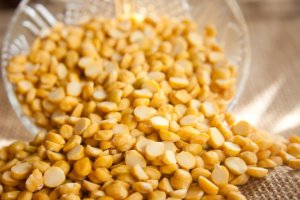
Lentils are a highly underrated legume. They are a staple in countries like Morocco and Turkey and have a truly outstanding iron content: about 6.6 mg per cup (cooked). Along with iron, lentils are also packed with B vitamins, fiber, magnesium, zinc, and powerful antioxidants known as polyphenols.
Chickpeas
Chickpeas (also called garbanzo beans) are a great source of iron with about 4.7 mg in a one cup serving (cooked). They also contain an excellent amount of fiber and other essential nutrients like magnesium, potassium, zinc, phosphorus, and folate. Plus, they are a great source of plant-based protein!
Soybeans
Various forms of soy all make the list of best iron rich plant foods. Raw edamame (green soybeans) comes in at just over 9 mg of iron per a one cup serving, while 6 ounces of tofu contains around 4 mg of iron. One cup of natto, a fermented soy product, contains the highest amount of iron yet: 15 mg.
Important Note: Always be sure to buy organic soy products to avoid genetically engineered soybeans, which make up the bulk of soy production today.
Spinach & Other Leafy Greens
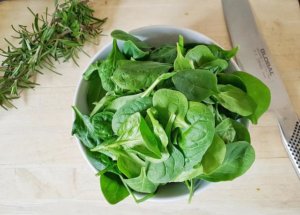
Spinach is another excellent source of iron with one cup of the cooked green coming in at 6.4 mg of iron. Other leafy greens aren’t far behind. Swiss chard (one cup cooked) has nearly 4 mg of iron, while beet greens and collards both have over 2 mg. Kale is slightly lower with about 1 mg per a one cup serving (cooked).
Beans
Beans double as both one of the best plant-based sources of protein and a great plant-based source of iron. Depending on the specific variety of bean, you can get anywhere from 4-6.6 mg of iron per a one cup serving. White beans are one of the best options as are kidney beans, lima beans, and navy beans.
Note: If you have trouble digesting beans, soak them 4-12 hours before cooking them.
Pumpkin Seeds (& Other Seeds)
Seeds tend to be high in various minerals, including iron. Pumpkin seeds, in particular, are rich in iron with just one ounce providing about 2.5 mg. Other good seeds to boost your iron intake include sesame, hemp seeds, and flax seeds. All have great amounts of fiber as well and pack in lots of nutritious fatty acids.
Cashews (& Other Nuts)
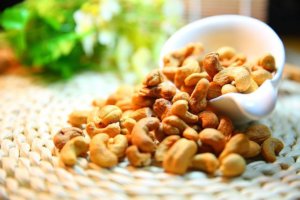
Like seeds, most nuts have a good mineral content and some are especially high in iron. Cashews definitely make the list of iron-rich plant foods, containing about 1.9 mg per one ounce serving. Almonds, pine nuts, and macadamia nuts aren’t far behind with over 1 mg of iron each. Nuts are also a great source of healthy fat and protein.
Potatoes (Skin On!)
Potatoes can be an incredibly nutritious food— as long as you don’t load them with a bunch of unhealthy additives. In this case, just one large potato packs in about 3.2 mg of iron (and sweet potatoes about 1.2 mg). However, it’s important to note that most of this iron is found in the potato skin, so be sure to leave it on! You’ll get more fiber that way, too.
Mushrooms
Mushrooms tend to fly under the radar, but they have an excellent nutrient content. Certain varieties are particularly high in iron, including white mushrooms (2.7 mg per cup- cooked), chanterelle (1.9 mg per cup- raw), and oyster mushrooms (1.1 mg per cup- raw). You’ll also get a good amount of antioxidants from most mushrooms.
Prunes
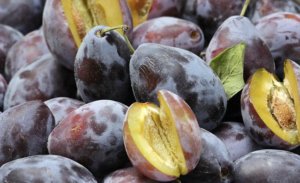
Fruit tends to be lower in iron than vegetables and other plant foods, but prunes are something of an exception. The juice contains the highest amount of iron with a one cup serving providing you about 3 mg. One cup of dried prunes also contains a decent amount of iron— 1.6 mg— but you might not want to eat that many prunes all at once…
Olives
Olives, which are technically a fruit, make it onto the list of top iron-based plant foods because just five large olives provide you with about 1.3 mg of iron. As a bonus, olives are also full of fiber, healthy fats, and vitamins A and E. They even contain powerful plant compounds that may lower your risk of heart disease.
Whole Grains
Most whole grains have a decent iron content, but some stand out above the rest. Two ancient grains, amaranth and spelt, lead the way with 5.2 mg and 3.2 mg, respectively (one cup serving- cooked). Not to be outdone, one cup of cooked quinoa comes in at 2.8 mg of iron and one cup of cooked oats at 2.1 mg of iron.
Dark Chocolate/Cocoa Powder
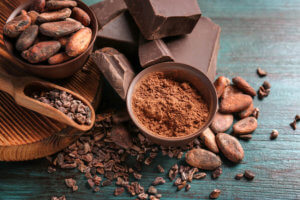
Need another reason to eat chocolate? Just a one-ounce section of dark chocolate is packed with 3.4 mg of iron as well as numerous other minerals (including magnesium) and antioxidants. You can also get about 1.5 mg of iron from 2 tablespoons of cocoa powder— and no sugar.
Chlorella & Spirulina
Chlorella and spirulina are both types of green algae. They are each incredibly nutritious and could well be considered superfoods. As far as iron content goes, just a tablespoon of spirulina provides you with about 2 mg of iron, while chlorella contains as much as 7 mg per tablespoon!
Molasses
Blackstrap molasses is absolutely one of the best iron rich plant foods with about 3.6 mg per a one tablespoon serving. However, it comes in at the bottom of this list because of its high sugar content. You can use it in place of refined sugar for more nutrients in your diet (including iron), but don’t overdo it.
Absorbing the Iron from Plant Foods + An Iron Myth
Heme Iron vs. Non-Heme Iron: Is There a Big Difference?
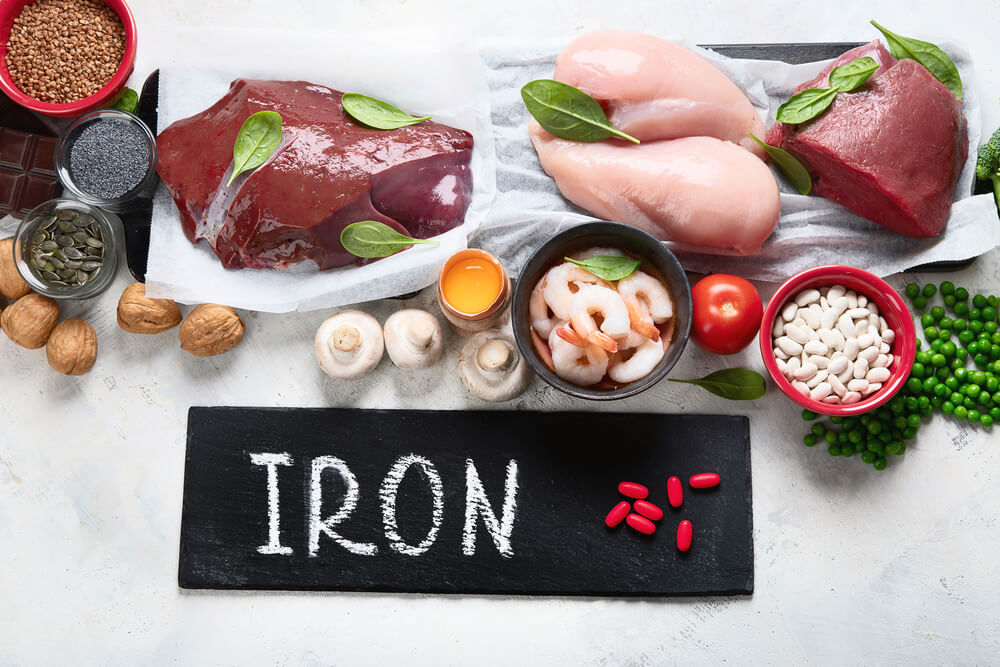
You can eat lots of plants high in iron, but that doesn’t mean your body is actually absorbing all of that iron. In fact, absorption is one of the most discussed topics when it comes animal vs. plant iron.
Animal-derived foods contain a type of iron known as heme iron, while plant-derived foods contain nonheme iron. The main difference between the two is that heme iron is more bioavailable than nonheme iron, which means your body can absorb more of it from the same amount of food.
This has led to a common misconception that vegans/vegetarians (aka plant-based eaters) are more at risk of an iron deficiency than meat eaters. However, the issue is not that straightforward.
There is some evidence indicating that vegetarians are more likely to have depleted iron stores than nonvegetarians. However, other research has shown that vegans and vegetarians typically have a higher intake of iron than meat-eaters (although, this study didn’t test blood levels of iron/ferritin).
Also, the bioavailability of iron in a mixed diet (meat + plants) is estimated to be 14-18%, while bioavailability in a vegetarian diet is estimated at 5-12%. There is a difference between the two, but it’s not as large as you might expect.
The bottom line is this: Getting enough iron in your diet is not about whether you eat meat or not. It’s about eating a variety of iron-rich plant foods and boosting your body’s ability to absorb it.
Factors that Affect Absorption
As we just discussed, getting iron from plants rather than from animals does decrease absorption. However, there are some other factors that affect the bioavailability of iron as well:
- Digestive disorders like irritable bowel disease (IBD) can decrease your body’s ability to absorb all nutrients, including iron.
- Phytates, which are found in grains, legumes, soy, nuts, and seeds, can inhibit iron absorption by varying amounts. Soaking these types of foods reduces phytate content.
- The polyphenols in tea and coffee can slow down iron absorption, although some researchers believe this may actually be a beneficial anti-cancer mechanism.
- Calcium reduces iron absorption, so you may want to avoid eating a lot of dairy with iron-rich meals.
For most people, these absorption inhibitors are not detrimental.
However, those at higher risk for an iron deficiency include pregnant women, those with heavy menstrual cycles, frequent blood donors, and those with a chronic health disorder (particularly gastrointestinal diseases). If you fall into one of these categories, you may want to pay more attention to potential iron inhibitors.
How to Improve Absorption of Iron Rich Plant Foods
While certain factors inhibit iron absorption, others boost it. You can make use of the following “hacks” to increase the amount of iron your body is getting from plants:
- Combine plants high in iron with vitamin C. Vitamin C can increase the absorption of nonheme iron by up to four times. Add foods like citrus, mangoes, and kiwi to your iron-rich meals, or try a quality supplement like this Purality Health Liposomal Vitamin C.
- Get your vitamin A. In a similar way to vitamin C, vitamin A has been shown to increase iron absorption, particularly from grains. You can get it in the form of beta-carotene from foods like sweet potatoes, pumpkin, and carrots.
- Soak, sprout, or ferment. Soaking, sprouting, and/or fermenting legumes and grains is a natural way to reduce phytate content and improve iron absorption.
- Avoid drinking coffee and tea with meals.
- Eat more allium vegetables. Alliums like garlic and onions have shown an ability to boost iron (and zinc) bioavailability in grains.
Getting Your Fill of Iron-Rich Plant Foods
As you can see, getting your RDI of iron solely from plant foods is not difficult at all. You can simply choose a variety of options from this list and include them in your daily diet.
If you know yourself to be at risk for a deficiency, you can also use the strategies listed above to increase the amount of iron your body is absorbing from plant foods. By doing this, you’ll meet your body’s requirements while avoiding the potentially harmful effects of too much heme iron from animal sources.
And if you want to keep exploring plant-based nutrients, read more about the crucial benefits of vitamin B-12 and how to get it from plants here.
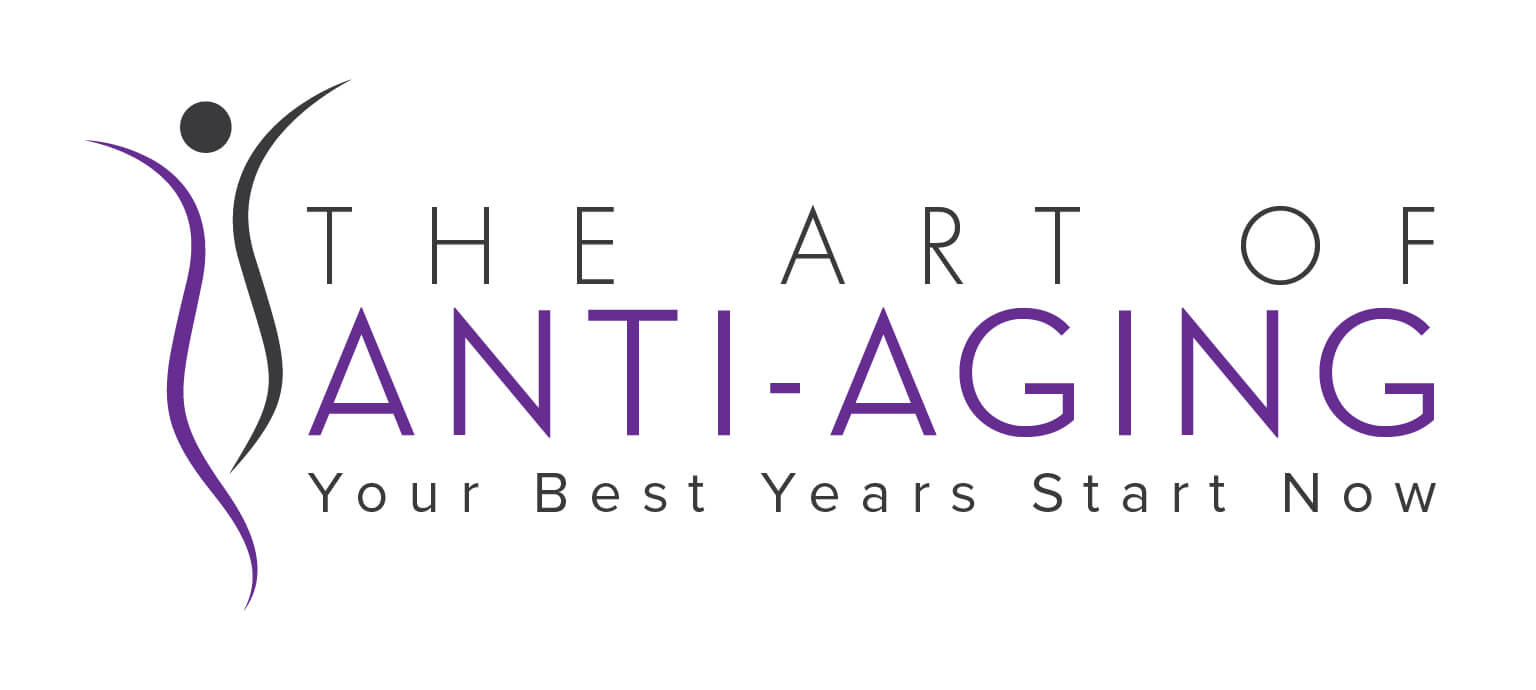
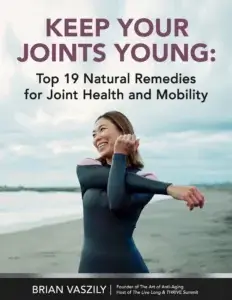
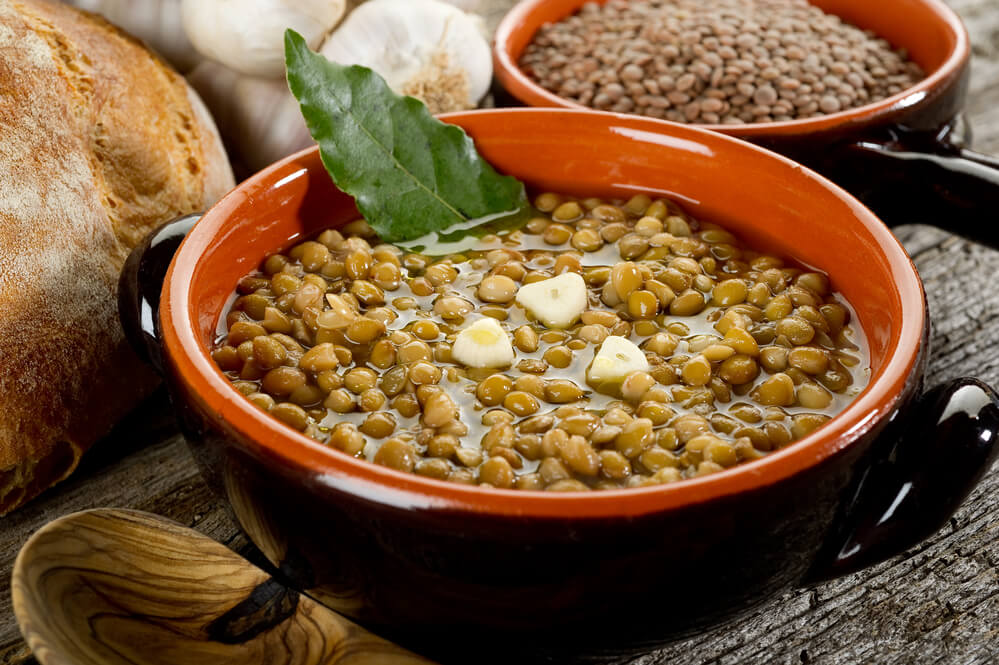
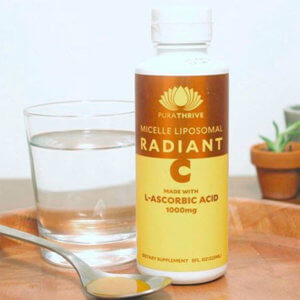
Awesome, love all your content 🌺🌺🌺🌺🌺
Thanks for info I did not know
Excellent article! Thank you!
Very helpful information. Thank you.
Very useful and insightful article.
Thanks
Thank you for this great article. 11 months ago I was diagnosed with anemia, kinda just out of the blue. And I’m a meat eater. I will work harder on some plant foods with iron. You mention meat can be harmful but you don’t say why. And I’d like to know.
Hi Arlene,I’m an A Blood type
and we can’t digest meat well
to get the iron out.We can’t eat red meat,so chicken and turkey and some fish/veg
is ok.I have been anaemic
so know how that feels !
Try Dr Dadamos book”Eat
Right For Your Type” if you know your blood group 🌻
Wonderful information to have. Thank you.
Such interesting information. There is just so much to know and remember about plants and nutrition.
Thank you for sharing this information.
Mary
Thank you very much for adding more to some of knowledge i already knew. Always something more to learn and new research reveals more.
Thank you for the great article. Can you please refer me to the best supplement source of vitamin B complex. Should these B vitamins better be taken separately or together and which B complex form do you recommend.
Thanks
Thank you, It was interesting.
Good morning
Yes, it’s good morning in India. I have gone through your article on iron. There were lot more i knew already but there are many things to know from your article as well.
Thank you for a nice detailed article.
I liked it because I myself am a journalist and a translator.
This is just to share
Thanx
Vrunda
This is an excellent article!! I particularly learned from the piece on poor absorption. Thanks so much!
Excellent information. I really enjoy these short, easy to read and understand, articles.
Excellent article, I knew all that because I am a fan of health writing, like yours.
I include in my eating, as I am a vegetarian, one ingrediant of each of what you wrote.
I feel well and continue to be careful.
Thank you.
Viviane
Thanks for the well absorbed info, I also love your smiles shared!
Good morning.
Thank you for the interesting information/article.
Always something new to learn.
Amazing info,excellent to know.
Great information! And easy to understand!! Thanks!!
Thank you for sharing, great information, and easy to understand.
What about eating cinnamon , ceylon cinnamon, with iron foods. It is supposed to increase the intake up to 90%. You have a ton of good info but this is one of the best ways to keep your iron levels up as a vegan/ vegetarian
Thanks again Brian for this update and refreshing article for me being a retired nurse.You are one of the few I still subscribe to for over 2 yrs. now that I look forward to read, and get some chuckles with your jokes.
More blessings to you,your family and your team❤